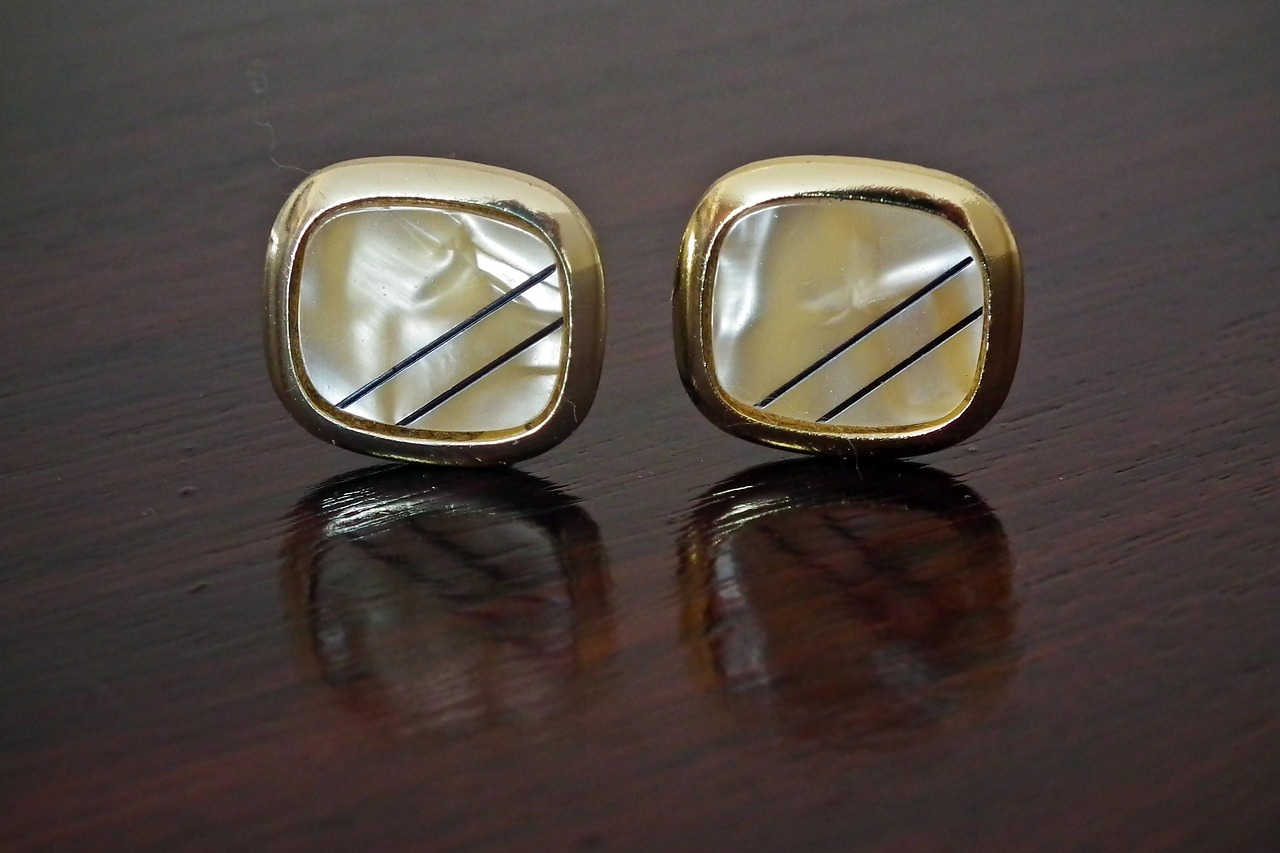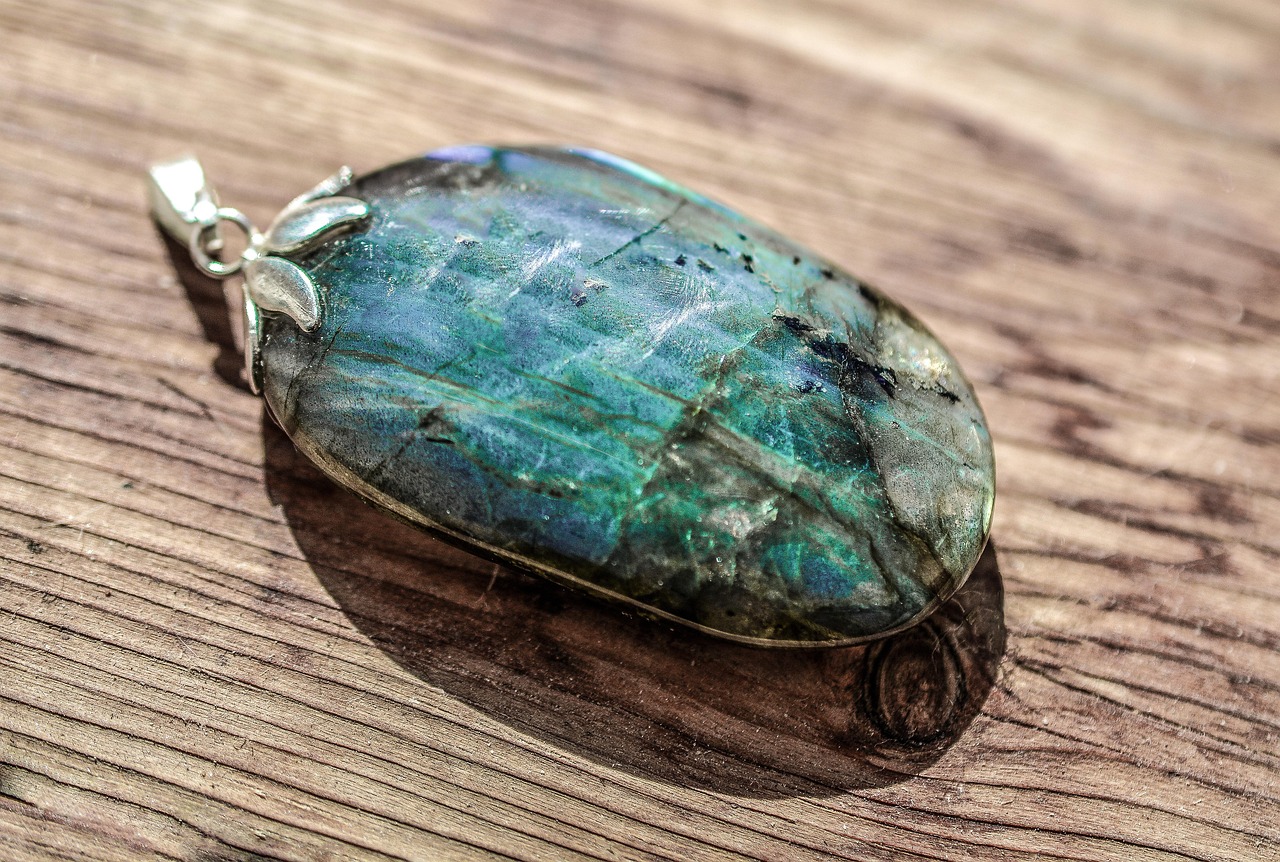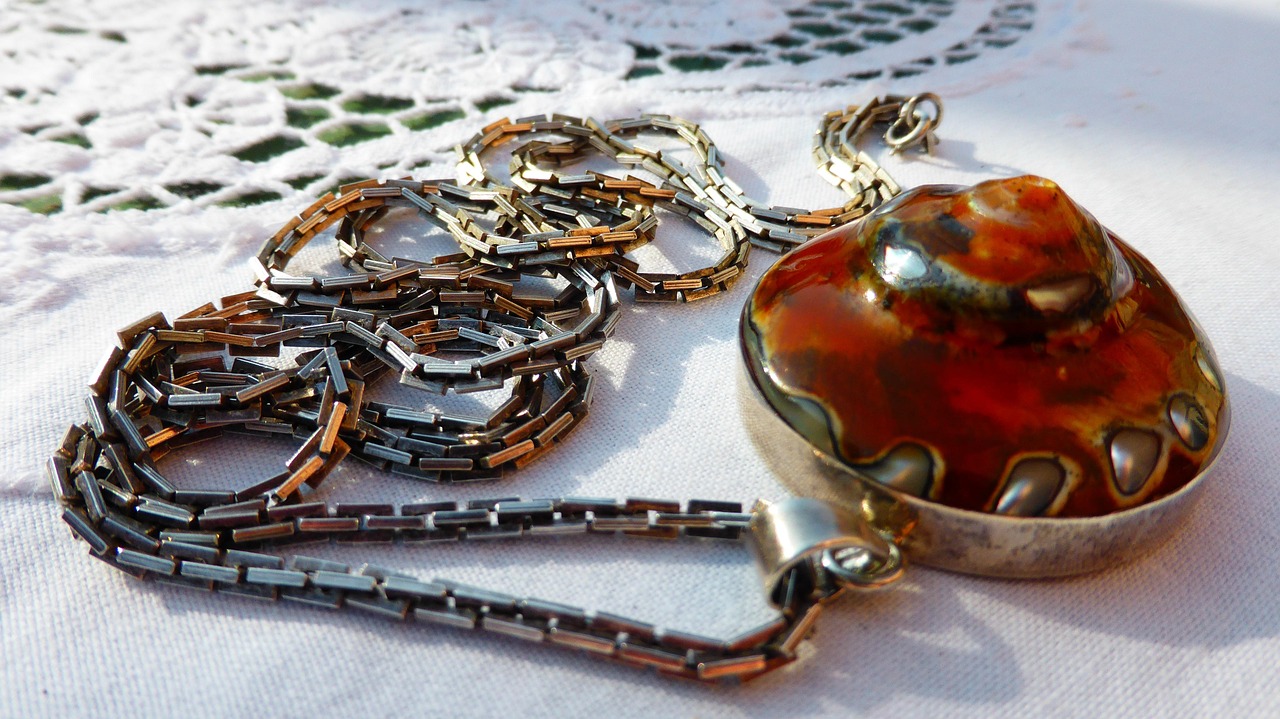is a fascinating exploration of how various religions utilize prayer beads as essential tools for meditation, prayer, and spiritual connection. These beads not only serve practical purposes but also carry deep historical and cultural significance across different faith traditions. This article delves into the various forms of prayer beads, their unique uses, and their profound impact on practitioners’ spiritual lives.
Prayer beads are spiritual tools used across many religions to assist in meditation and prayer. They help practitioners focus their minds and count their recitations, allowing for a more profound spiritual experience. Typically made from materials like wood, stone, or seeds, these beads reflect the cultural traditions of the faith they represent.
Each religion has its unique approach to using prayer beads, enhancing its spiritual practices. Understanding these differences not only enriches our knowledge of each faith but also fosters respect for their diverse beliefs.
In Christianity, particularly within the Catholic tradition, the rosary is a vital tool for prayer. It consists of a series of beads that guide the faithful through specific prayers, such as the Hail Mary and Our Father. The rosary serves as a structured way to meditate on the life of Christ and the Virgin Mary.
The rosary’s history dates back to the Middle Ages, symbolizing the importance of prayer in Christianity. Its development reflects the evolving practices of devotion, making it a cherished ritual for many believers.
Today, the rosary continues to be a source of comfort and structure in the prayer lives of many Christians. It remains integral to both personal and communal worship, helping the faithful cultivate a deeper connection with their spirituality.
The misbaha, or tasbih, is used in Islam to keep track of dhikr, or the remembrance of God. Typically consisting of 33, 66, or 99 beads, this practice fosters mindfulness and a deeper spiritual connection to the divine.
In Buddhism, mala beads are commonly used for meditation and mantra recitation. Usually consisting of 108 beads, they serve as a tactile reminder of spiritual intentions and assist practitioners in focusing their minds during meditation.
The number 108 holds significant meaning in Buddhism, representing the universe’s wholeness. Each bead on a mala aids practitioners in their journey toward enlightenment, enhancing their mindfulness and spiritual practice.
Mala beads facilitate a rhythmic approach to meditation, allowing practitioners to concentrate on their breathing and mantras. This enhances their overall meditation experience and deepens their connection to their spiritual path.
In Hinduism, japa mala beads are crucial for chanting mantras, typically consisting of 108 beads. This practice is central to spiritual development and devotion to deities, promoting a deeper understanding of one’s faith.
Repetition of mantras using japa mala beads fosters a sense of peace and connection to the divine. It is believed to purify the mind and elevate spiritual consciousness, making it a vital practice for many Hindus.
Japa malas can be crafted from various materials, each holding specific significance. Common materials include tulsi wood, rudraksha seeds, and gemstones, chosen for their unique spiritual properties, enhancing the practitioner’s experience.
Utilizing prayer beads can significantly enhance mental well-being, promoting relaxation and reducing stress. The repetitive nature of bead counting can create a meditative state, fostering emotional stability and clarity.
Prayer beads encourage mindfulness, helping users remain present during their spiritual practices. This focus can lead to deeper insights and a more profound connection to one’s faith.
Engaging with prayer beads can alleviate anxiety and provide comfort. The physical act of counting beads serves as a grounding technique, especially during stressful or uncertain times.
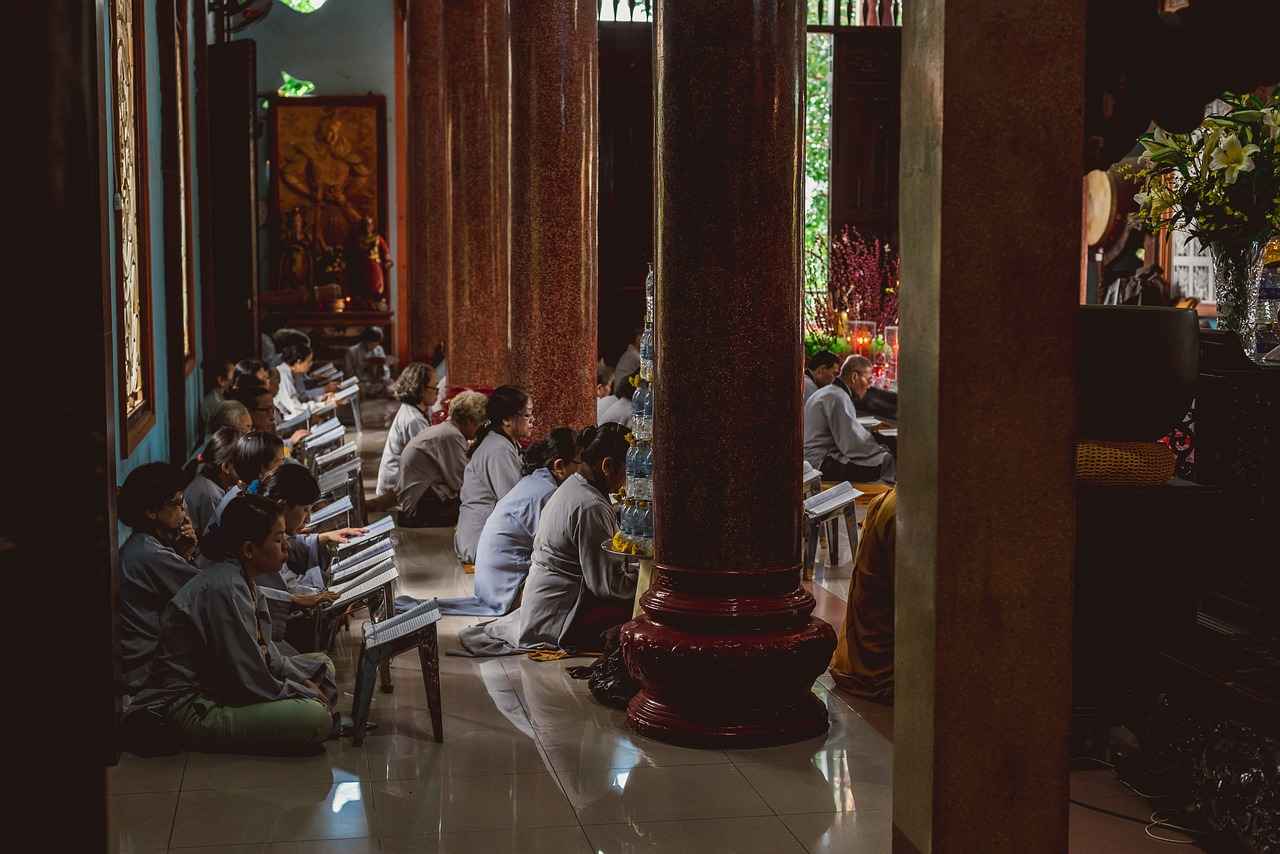
What Are Prayer Beads?
Prayer beads are sacred tools utilized across various religions to enhance meditation and prayer practices. These beads serve as a physical representation of spiritual journeys, allowing practitioners to focus their minds and count their recitations. Their diverse forms and materials reflect the rich tapestry of cultural traditions, each carrying unique meanings and purposes.
Prayer beads, often referred to as mala, rosary, or misbaha, play a crucial role in spiritual practices around the world. These tools are designed to assist individuals in their quest for mindfulness, concentration, and a deeper connection to their faith. Typically, prayer beads come in strands of specific counts—such as 108 in Buddhism and Hinduism or 53 in the Catholic rosary—each bead representing a recitation of a prayer or mantra. The tactile nature of the beads allows users to engage physically in their spiritual practices, creating a rhythm that enhances meditation.
Across various faiths, prayer beads are used in distinctive ways, reflecting the unique beliefs and practices of each tradition. Understanding these differences not only enriches one’s knowledge but also fosters respect for the diverse spiritual landscapes of the world.
In Christianity, particularly among Catholics, the rosary is a vital instrument for prayer. It consists of a series of beads that guide the faithful through specific prayers, such as the Hail Mary and the Our Father. The rosary serves as a meditative tool, helping practitioners to reflect on the life of Jesus Christ and the Virgin Mary.
Islamic prayer beads, known as misbaha or tasbih, typically consist of 33, 66, or 99 beads. These beads are used to keep track of dhikr, the remembrance of God. This practice is integral to fostering mindfulness and spiritual connection, allowing practitioners to deepen their relationship with the divine.
In Buddhism, mala beads are essential for meditation and mantra recitation. A standard mala consists of 108 beads, each representing a step toward enlightenment. The number 108 holds significant meaning in Buddhist philosophy, symbolizing the universe’s wholeness. Practitioners use these beads to maintain focus during meditation, enhancing their spiritual experience.
In Hinduism, japa mala beads are used for chanting mantras. Typically made up of 108 beads, this practice is central to spiritual development and devotion to deities. The repetition of mantras using japa mala beads fosters a sense of peace and connection to the divine, believed to purify the mind and elevate spiritual consciousness.
Utilizing prayer beads can significantly enhance mental well-being. The repetitive nature of bead counting creates a meditative state, promoting relaxation and reducing stress. This practice encourages mindfulness, helping users stay present during their spiritual exercises, leading to deeper insights and a more profound connection to their faith.
Prayer beads cultivate mindfulness by providing a physical anchor during meditation. This focus can lead to enhanced emotional stability and clarity of thought, allowing practitioners to navigate their spiritual journeys more effectively.
Engaging with prayer beads can serve as a grounding technique during times of stress or uncertainty. The physical act of counting beads can alleviate anxiety, providing comfort and a sense of control amidst chaos.

How Do Different Religions Use Prayer Beads?
Prayer beads, known by various names across different faiths, are not merely decorative items; they serve a profound purpose in enhancing spiritual practices. Each religion has developed its unique approach to using these beads, reflecting their beliefs, traditions, and values. In this article, we will explore how different religions utilize prayer beads, highlighting their significance in spiritual practices.
- Christianity: In Christianity, particularly within the Catholic tradition, the rosary is a powerful tool for prayer. It consists of a series of beads that guide the faithful through a structured sequence of prayers, including the Hail Mary and the Our Father. This practice not only aids in meditation but also helps practitioners reflect on the mysteries of faith.
- Islam: The misbaha, or tasbih, is used in Islam to count the recitations of dhikr, or the remembrance of God. Typically made up of 33, 66, or 99 beads, the misbaha helps Muslims maintain focus during their prayers and meditative practices, fostering a deeper connection with Allah.
- Buddhism: In Buddhism, mala beads are often used during meditation and mantra recitation. A standard mala consists of 108 beads, which symbolize the universe’s wholeness. Each bead serves as a tactile reminder of spiritual intentions, allowing practitioners to concentrate on their breathing and mantras, enhancing their meditation experience.
- Hinduism: The japa mala is central to Hindu spiritual practice, utilized for chanting mantras. Like the Buddhist mala, it typically contains 108 beads, which assist in mantra repetition. This practice is believed to purify the mind and elevate spiritual consciousness, creating a profound connection with the divine.
Using prayer beads offers numerous psychological and spiritual benefits across different religions. Here are some key advantages:
- Enhancing Mindfulness: The act of counting beads promotes mindfulness, helping users remain present during their spiritual practices. This focused attention can lead to deeper insights and a more profound connection to one’s faith.
- Reducing Anxiety: Engaging with prayer beads can alleviate anxiety and provide comfort. The repetitive nature of bead counting serves as a grounding technique, especially during stressful times.
- Fostering Emotional Stability: The rhythmic motion of moving beads can create a meditative state, promoting relaxation and reducing stress. This emotional stability can enhance overall mental well-being.
The cultural context in which prayer beads are used greatly influences their design, materials, and significance. For instance, in Hinduism, japa malas are often made from sacred materials like rudraksha seeds or tulsi wood, each chosen for its spiritual properties. In contrast, Buddhist malas may incorporate gemstones believed to enhance meditation.
Understanding these cultural nuances provides valuable insights into the beliefs and values of each faith tradition. It highlights the rich tapestry of spiritual practices across the globe, where prayer beads serve as a common thread connecting individuals to their faith.
In conclusion, prayer beads are a vital component of spiritual practices in various religions. They not only aid in meditation and prayer but also foster a sense of community and continuity among practitioners. By exploring these diverse uses, we gain a deeper appreciation for the role of prayer beads in enhancing spiritual experiences.
Christianity and the Rosary
The practice of using the rosary in Christianity, particularly within the Catholic tradition, is a profound expression of faith and devotion. The rosary is not merely a string of beads; it is a spiritual tool that facilitates prayer, reflection, and meditation on the life of Jesus Christ and the Virgin Mary. This sacred practice invites the faithful to engage deeply with their spirituality, fostering a personal connection with God.
The rosary comprises a series of beads divided into sections, each representing specific prayers and meditations. Typically, a rosary consists of 53 Hail Mary beads, 6 Our Father beads, and a crucifix. The structure allows practitioners to move through a sequence of prayers, including the Joyful, Sorrowful, Glorious, and Luminous Mysteries, each focusing on significant events in the life of Christ and Mary.
Using the rosary can significantly enhance one’s prayer life. It provides a structured approach to prayer, which can be especially beneficial for those who struggle with maintaining focus during meditation. The repetitive nature of the prayers allows for a calming rhythm that can lead to a deeper state of contemplation and connection with the divine.
The rosary has a rich history that dates back to the Middle Ages. It evolved from the practice of counting prayers using pebbles or knots. The formalization of the rosary as we know it today began in the 15th century, with the Dominican Order playing a vital role in its promotion. This history reflects the growing importance of prayer in the Christian faith and the desire to create a tangible way to connect with God.
In contemporary worship, many Christians continue to find solace in the rosary. It serves as a vital aspect of both personal and communal prayer. Regular use of the rosary can help individuals navigate life’s challenges, offering a sense of comfort and structure during times of uncertainty. The practice is often incorporated into various religious ceremonies, including funerals and devotional gatherings.
Engaging with the rosary can yield numerous psychological benefits. The act of counting beads can create a meditative state, promoting relaxation and reducing stress. This repetitive motion can serve as a grounding technique, helping individuals manage anxiety and find peace amidst chaos. Furthermore, the rosary encourages mindfulness, allowing practitioners to remain present and connected during their prayer sessions.
For those new to the rosary, starting can be a straightforward process. Here are some steps to guide beginners:
- Choose a Rosary: Select a rosary that resonates with you, whether it be in color, material, or design.
- Learn the Prayers: Familiarize yourself with the prayers associated with the rosary, such as the Our Father, Hail Mary, and Glory Be.
- Set a Regular Time: Establish a routine for your rosary prayers, allowing for consistency and deeper engagement.
- Reflect on the Mysteries: Take time to meditate on the mysteries associated with each decade of the rosary, enhancing your understanding and connection.
In conclusion, the rosary serves as a powerful tool for prayer and meditation within Christianity. Its historical significance, structured approach to prayer, and psychological benefits make it an invaluable practice for many believers. By incorporating the rosary into one’s spiritual life, individuals can cultivate a deeper relationship with their faith and find solace in the rhythms of prayer.
Historical Significance of the Rosary
The rosary holds a profound and intricate history that dates back to the Middle Ages, serving as a vital symbol of prayer within the Christian faith. Its evolution over the centuries reflects not only the changing practices of devotion but also the deepening relationship between believers and their spirituality.
The origins of the rosary can be traced to the early Christian practice of using prayer beads to count prayers. Initially, simple strings of knots or pebbles were used. By the 12th century, the rosary began to take a more defined shape, particularly within monastic communities. This period marked the beginning of a structured approach to prayer, allowing the faithful to engage more deeply with their spiritual lives.
Throughout the centuries, the rosary has undergone significant transformations. In the 15th century, the Dominican Order played a crucial role in promoting the rosary as a form of devotion. The introduction of the Hail Mary prayer and the mysteries associated with the rosary further enriched its practice. This development not only made the rosary more accessible to the layperson but also emphasized the importance of meditation on the life of Christ and the Virgin Mary.
The traditional rosary consists of a set of beads arranged in a specific pattern. Typically, it includes:
- Five decades of ten Hail Mary beads, each separated by a larger bead.
- One Our Father bead at the beginning of each decade.
- A medal representing the Virgin Mary or another saint.
This structure not only aids in counting prayers but also serves as a guide for meditative reflection on the mysteries of faith.
The rosary is more than just a tool for counting prayers; it is a profound means of connecting with God. Each bead represents a step in the journey of faith, guiding practitioners through a meditative experience that fosters spiritual growth. The repetitive nature of the prayers encourages a state of mindfulness, allowing individuals to focus on their intentions and deepen their relationship with the divine.
Today, the rosary remains a vital part of personal and communal worship among Christians, particularly within the Catholic Church. Many believers find solace and structure in their prayer life through the rosary. It is often used during Mass, prayer groups, and personal meditation sessions. Furthermore, the rosary has been embraced in various forms of media, including books and apps, making it more accessible to a wider audience.
Engaging with the rosary offers numerous benefits:
- Enhanced Focus: The tactile nature of the beads helps maintain concentration during prayer.
- Emotional Comfort: Many find peace and a sense of grounding through the repetitive prayers.
- Community Connection: Group rosary prayers foster a sense of belonging and shared faith.
These benefits contribute to the rosary’s enduring significance in the spiritual lives of many Christians.
In summary, the historical significance of the rosary is deeply intertwined with the evolution of Christian devotion. From its humble beginnings to its current status as a cherished spiritual tool, the rosary continues to inspire and guide believers in their prayer journeys.
Modern Usage of the Rosary
The rosary is not merely a string of beads; it is a profound tool that many Christians utilize to deepen their connection with God. In contemporary society, the rosary has evolved into a cherished practice that provides both structure and solace in the lives of countless believers.
Many Christians, especially within the Catholic tradition, find that the rosary serves as a vital aspect of their spiritual journey. It helps them to focus their thoughts and intentions during prayer. The repetitive nature of the prayers, combined with the tactile experience of moving through the beads, creates a calming rhythm that can enhance one’s meditative state.
- Guided Prayer: The rosary provides a structured approach to prayer, guiding practitioners through various prayers such as the Ave Maria and the Our Father.
- Meditation: Each decade of the rosary corresponds to a specific mystery, allowing users to meditate on significant events in the life of Jesus and Mary.
- Community Worship: The rosary is often recited in groups, fostering a sense of community and shared faith among participants.
Engaging with the rosary can yield various psychological benefits. The act of counting beads and reciting prayers can help to reduce stress and promote a sense of peace. Many users report feeling a greater sense of calmness and emotional stability, particularly during challenging times.
The rosary encourages mindfulness by helping users to remain present during their prayers. By focusing on the beads and the prayers, individuals can cultivate a deeper awareness of their spiritual journey. This practice not only enriches their prayer life but also helps in developing a more profound connection with their faith.
In today’s fast-paced world, the rosary remains relevant as a tool for spiritual reflection. Many people incorporate it into their daily routines, finding that it offers a moment of respite from the chaos of life. Whether used in personal prayer or communal gatherings, the rosary continues to serve as a bridge between the divine and the individual.
Numerous testimonials highlight the impact of the rosary on personal faith journeys. Many individuals share stories of how the rosary has provided them with comfort during times of grief, uncertainty, or anxiety. These narratives underscore the rosary’s role as a source of strength and hope.
Ultimately, the modern usage of the rosary transcends mere tradition; it embodies a living practice that continues to resonate with Christians today. As believers navigate the complexities of life, the rosary stands as a beacon of faith, guiding them through prayer and reflection.
Islam and Misbaha: The Islamic Prayer Beads
In the rich tapestry of Islamic spirituality, the misbaha, also known as tasbih, plays a vital role in the daily lives of millions of Muslims. These prayer beads, typically comprising 33, 66, or 99 beads, are more than mere objects; they are tools for dhikr, or the remembrance of God. This practice not only fosters a deep spiritual connection but also enhances mindfulness and tranquility in the lives of practitioners.
The misbaha serves as a physical representation of a Muslim’s devotion and dedication to their faith. By using these beads, individuals can keep track of their recitations of phrases such as “Subhanallah” (Glory be to God), “Alhamdulillah” (Praise be to God), and “Allahu Akbar” (God is the Greatest). Each bead represents a moment of reflection, helping practitioners to focus on their spiritual intentions.
Engaging with the misbaha encourages a state of mindfulness. The act of counting beads allows individuals to center their thoughts and calm their minds. This repetitive motion can lead to a meditative state, where one becomes more aware of their surroundings and their relationship with the divine. The tactile experience of the beads can also provide a sense of grounding, making it easier to connect with one’s inner self.
- Wooden Misbaha: Often made from various types of wood, these beads are popular for their natural feel and aesthetic appeal.
- Plastic Misbaha: Lightweight and affordable, plastic beads are commonly used, especially for everyday practice.
- Gemstone Misbaha: Crafted from semi-precious stones, these beads are valued for their beauty and supposed spiritual properties.
The use of misbaha is intertwined with other forms of worship in Islam. It complements the five daily prayers and can be used during quiet moments of reflection throughout the day. Many Muslims incorporate the misbaha into their Ramadan practices, using it to enhance their spiritual focus during this holy month.
While the misbaha is primarily a religious tool, its benefits extend beyond the confines of formal worship. Many individuals find that using the misbaha can help reduce stress and anxiety, making it a valuable asset in daily life. The rhythmic counting can serve as a calming technique in challenging situations, promoting emotional stability.
In conclusion, the misbaha is not just a set of beads but a profound instrument for spiritual growth and mindfulness in Islam. Its use enhances the practice of dhikr, fosters a deeper connection with God, and serves as a reminder of the importance of reflection and tranquility in a busy world. As Muslims continue to embrace this tradition, the misbaha remains a treasured companion on their spiritual journey.
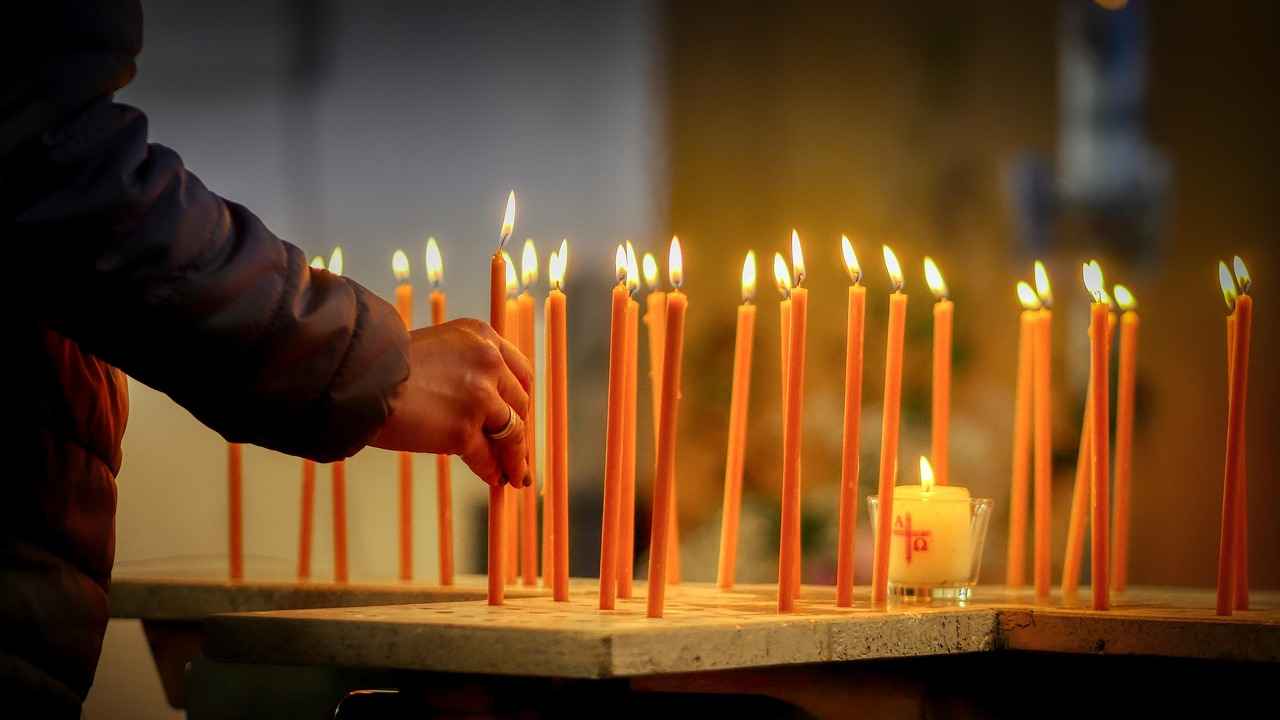
What Is the Role of Prayer Beads in Buddhism?
In the rich tapestry of Buddhist practice, mala beads play a crucial role, serving as both a spiritual tool and a physical reminder of one’s intentions. These prayer beads, typically comprising 108 beads, are not only instrumental in meditation but also embody profound symbolic meanings that resonate deeply with practitioners.
The number 108 holds a sacred significance in Buddhism, representing the wholeness of the universe. Each bead on a mala serves as a point of focus during meditation, allowing practitioners to keep track of their mantras or breaths. This number is believed to encompass the various aspects of human experience, including the three realms of existence, the six realms of samsara, and the nine forms of consciousness, making it a powerful tool for spiritual growth.
Mala beads facilitate a rhythmic approach to meditation, enhancing the overall experience. As practitioners move through the beads, they can concentrate on their mantras, which can be repeated silently or aloud, allowing for a deeper connection to their spiritual practice. This tactile interaction encourages mindfulness, helping individuals stay present in the moment.
- Counting Mantras: Each bead represents a mantra recitation, helping to maintain focus and intention.
- Breath Awareness: Practitioners often synchronize their breath with the movement of the beads, promoting a sense of calm.
- Spiritual Intent: The act of using mala beads signifies a commitment to one’s spiritual journey and intentions.
The practice of using mala beads extends beyond spiritual growth; it also offers various psychological benefits. Engaging with mala beads can create a meditative state that fosters emotional stability and reduces anxiety.
- Mindfulness and Focus: The repetitive nature of counting beads encourages mindfulness, allowing practitioners to immerse themselves fully in their spiritual practices.
- Stress Reduction: The physical act of handling the beads can serve as a grounding technique, providing comfort during times of stress or uncertainty.
- Emotional Clarity: Regular use of mala beads can lead to improved emotional clarity, helping individuals navigate their feelings more effectively.
Mala beads can be crafted from various materials, each chosen for its unique spiritual properties. Common materials include:
| Material | Significance |
|---|---|
| Tulsi Wood | Believed to purify the mind and body. |
| Rudraksha Seeds | Thought to enhance spiritual awareness and connection. |
| Gemstones | Each stone carries specific energies and healing properties. |
Selecting the right mala beads is a personal journey. Considerations include the material, the energy of the beads, and how they resonate with your spiritual practice. Once chosen, caring for your mala is essential to maintain its integrity and energy. This can involve:
- Regular Cleansing: Periodically cleanse your mala to remove negative energies.
- Proper Storage: Store your mala in a sacred space, away from distractions.
- Intention Setting: Set a clear intention for your mala, reinforcing its purpose in your practice.
In summary, mala beads are a profound aspect of Buddhist meditation and spiritual practice. They serve as a bridge between the physical and spiritual realms, offering practitioners a means to deepen their focus, enhance their mindfulness, and connect with their inner selves.
The Symbolism of 108 Beads
The number 108 is not just a number; it is a profound symbol in Buddhism that embodies the essence of the universe. This sacred figure is intricately woven into the practices of many Buddhist traditions, particularly through the use of mala beads. Each mala typically consists of 108 beads, serving as a vital tool for meditation and mindfulness.
The significance of 108 extends beyond mere numerology. It is believed to represent the wholeness of the universe and the interconnectedness of all beings. In Buddhist cosmology, the number is often associated with the 108 defilements or distractions that hinder enlightenment. By reciting mantras or prayers while moving through each bead, practitioners symbolically work through these defilements, aiming for spiritual clarity and peace.
Mala beads serve as a tactile reminder during meditation, facilitating a deeper connection to the practice. The act of counting beads allows practitioners to concentrate on their breathing and mantras, creating a rhythmic flow that enhances focus. This method not only aids in mindfulness but also helps to quiet the mind, making it easier to enter a meditative state.
- Counting Mantras: Each bead represents a single recitation of a mantra, helping practitioners keep track of their repetitions.
- Fostering Mindfulness: The physical act of moving from bead to bead encourages a meditative mindset.
- Setting Intentions: Practitioners can use the mala to set intentions for their meditation, focusing on specific goals or desires.
Interestingly, the number 108 is not exclusive to Buddhism. It also appears in other spiritual practices, including Hinduism, where it is similarly used in japa mala for mantra recitation. This cross-cultural significance highlights the universal themes of spiritual growth and self-awareness.
The materials used to create mala beads can also influence their spiritual significance. Common materials include wood, seeds, and gemstones, each chosen for their unique properties. For instance, rudraksha seeds are believed to offer calming effects, while rose quartz is associated with love and compassion.
For those new to meditation or using mala beads, starting with a simple practice can be beneficial. Begin by finding a comfortable space, holding the mala in your right hand, and setting a clear intention for your session. As you recite your chosen mantra, move through each bead, allowing the rhythm to guide you into a deeper state of mindfulness.
In summary, the number 108 carries profound significance in Buddhism, symbolizing the journey toward enlightenment. Through the use of mala beads, practitioners can enhance their meditation practices, fostering mindfulness and spiritual growth. Whether you are a seasoned practitioner or a curious beginner, understanding the symbolism of 108 can deepen your connection to these powerful tools.
Using Malas in Meditation
is a practice deeply rooted in tradition, particularly within Buddhism and Hinduism. These sacred beads serve not only as tools for counting mantras but also as instruments that enhance the meditative experience. By incorporating mala beads into meditation, practitioners can achieve a greater sense of focus and tranquility.
Mala beads typically consist of 108 beads, a number that holds significant spiritual meaning. In Buddhist tradition, it is believed that there are 108 defilements or distractions that one must overcome to reach enlightenment. Therefore, each bead represents a step towards spiritual clarity and mindfulness. The tactile nature of the beads allows practitioners to engage their senses, which can deepen their meditative state.
The rhythmic use of mala beads facilitates a structured approach to meditation. As practitioners move from bead to bead, they can focus on their breathing and the repetition of mantras. This rhythmic counting helps in anchoring the mind, reducing distractions that often hinder meditation. The act of touching each bead serves as a reminder of the present moment, enhancing overall mindfulness.
Moreover, mala beads can aid in creating a calm environment. By establishing a routine that includes the use of malas, practitioners can signal to their minds that it is time to meditate. This consistency can foster a deeper connection to the practice and promote a sense of peace.
- Improved Concentration: The repetitive motion of counting beads allows for a focused meditation experience, minimizing the chance of wandering thoughts.
- Emotional Stability: Engaging with mala beads can help regulate emotions, providing a calming influence during stressful times.
- Enhanced Spiritual Connection: The physical aspect of using mala beads can deepen the connection to spiritual intentions and aspirations.
Additionally, the practice of using mala beads can lead to a sense of accomplishment. Completing a full cycle of mantras can provide a feeling of closure and satisfaction, reinforcing the benefits of the meditation session.
To effectively use mala beads in meditation, follow these simple steps:
- Choose Your Mantra: Select a mantra that resonates with you, whether it’s a traditional phrase or a personal affirmation.
- Find a Comfortable Position: Sit in a comfortable position, ensuring your back is straight and your body is relaxed.
- Begin with the First Bead: Hold the first bead between your thumb and forefinger, and recite your mantra. As you finish, move to the next bead.
- Maintain a Steady Rhythm: Continue this process until you reach the end of the mala, focusing on your breath and mantra as you go.
By integrating mala beads into your meditation routine, you can cultivate a deeper sense of mindfulness and spiritual awareness. The physical act of counting beads not only aids in concentration but also serves as a reminder of your spiritual journey.
In conclusion, mala beads are more than just decorative objects; they are powerful tools that can transform your meditation practice. By embracing their use, you can enhance your ability to focus, achieve emotional balance, and deepen your spiritual connection.

How Are Prayer Beads Used in Hinduism?
In Hinduism, the practice of using japa mala beads is not merely a ritualistic activity but a profound spiritual journey. These beads, typically composed of 108 beads, serve as an essential tool for chanting mantras and facilitating meditation. The act of using japa mala beads is deeply rooted in the tradition of devotion and is considered a pathway to spiritual growth and enlightenment.
The primary purpose of japa mala beads is to assist practitioners in the repetitive chanting of mantras, which is a vital aspect of Hindu worship. Each bead represents a count for a mantra recitation, allowing the devotee to maintain focus and concentration during their spiritual practice. This ritualistic repetition is believed to help in purifying the mind and fostering a deeper connection with the divine.
The repetition of mantras using japa mala beads creates a rhythm that can lead to a meditative state, enhancing one’s spiritual experience. This practice is thought to establish a sense of peace and tranquility, allowing practitioners to connect more profoundly with their inner selves and the universe. As practitioners chant, they often experience a transcendental state of awareness, which can elevate their spiritual consciousness.
Japa malas can be crafted from various materials, each holding unique spiritual significance. Common materials include:
- Tulsi Wood: Revered for its purifying properties, tulsi is often associated with Lord Krishna.
- Rudraksha Seeds: These seeds are believed to have divine origins and are used for their calming effects.
- Gemstones: Different gemstones are chosen for their specific energies, enhancing the spiritual experience.
Each type of mala serves a specific purpose and is chosen based on the practitioner’s personal beliefs and spiritual goals.
Using japa mala beads in meditation allows for a tactile connection to the practice. As practitioners move their fingers across the beads, they can concentrate on their breathing and the sound of their mantras. This tactile engagement helps to ground the practitioner, making it easier to enter a meditative state. The act of counting beads can also create a mindful environment, allowing for deeper insights and a more profound connection to one’s faith.
Engaging with japa mala beads can provide numerous psychological benefits. The repetitive nature of mantra chanting can reduce stress and anxiety, promoting a sense of calm and stability. By focusing on the beads and the mantra, practitioners can cultivate mindfulness, allowing them to remain present in the moment. This practice not only enhances emotional well-being but also fosters a greater understanding of one’s spiritual journey.
For those new to the practice, starting with japa mala beads can be simple and rewarding. Here are some steps to begin:
- Choose Your Mala: Select a mala that resonates with you, considering the material and its significance.
- Set an Intention: Before you start chanting, set a clear intention or goal for your practice.
- Begin Chanting: Hold the mala in your right hand, and start reciting your chosen mantra, moving from bead to bead.
- Maintain Focus: Allow the rhythm of your chanting to guide your meditation, and try to remain present throughout the process.
By following these steps, beginners can easily incorporate japa mala beads into their spiritual practices, paving the way for deeper exploration and understanding of Hinduism.
The Importance of Mantra Repetition
In the realm of spiritual practices, mantra repetition holds a significant place, especially within Hinduism. The use of japa mala beads is a traditional method that enhances this practice, creating a profound connection between the practitioner and the divine. This article delves into the importance of mantra repetition, exploring its benefits and the spiritual depth it fosters.
Mantra repetition is not merely a ritual; it serves as a pathway to inner peace and spiritual awakening. By engaging in this practice, individuals can experience a multitude of benefits, including:
- Purification of the Mind: Repeating mantras helps clear mental clutter, allowing for greater focus and clarity.
- Elevating Spiritual Consciousness: The rhythmic nature of mantra chanting can lift one’s spiritual awareness, fostering a deeper connection to the divine.
- Enhancing Meditation: Utilizing japa mala beads during meditation provides a tactile element that aids concentration and mindfulness.
Japa mala, typically consisting of 108 beads, is specifically designed for the repetition of mantras. Each bead represents a cycle of meditation, allowing practitioners to keep track of their recitations. This method not only enhances focus but also creates a rhythmic flow that can lead to a meditative state.
Engaging in mantra repetition through japa mala beads offers profound spiritual benefits:
- Connection to the Divine: Each repetition is a form of prayer, fostering a sense of connection to higher powers.
- Emotional Healing: The soothing act of chanting can help alleviate feelings of anxiety and stress, promoting emotional well-being.
- Mindfulness and Presence: The repetitive nature of mantra chanting encourages practitioners to remain present, enhancing their overall spiritual experience.
The materials used to create japa mala beads are significant, as each type is believed to possess unique spiritual properties. Common materials include:
| Material | Significance |
|---|---|
| Tulsi Wood | Known for its purifying properties, tulsi is revered in Hinduism. |
| Rudraksha Seeds | These seeds are believed to enhance meditation and spiritual growth. |
| Gemstones | Each gemstone is associated with different energies and healing properties. |
Incorporating mantra repetition into daily routines can be both simple and rewarding. Practitioners can:
- Set Aside Dedicated Time: Allocate specific times for mantra chanting to establish a routine.
- Use Japa Mala Beads: Utilize beads to keep count and maintain focus during meditation sessions.
- Integrate into Daily Activities: Chant mantras during mundane tasks to cultivate mindfulness throughout the day.
In conclusion, the practice of mantra repetition using japa mala beads is a powerful spiritual tool that fosters peace, connection, and personal growth. By understanding its significance and benefits, individuals can enhance their spiritual journey and cultivate a deeper relationship with the divine.
Types of Japa Malas
Japa malas serve as essential tools in the spiritual practices of many Hindus, facilitating the repetition of mantras and aiding in meditation. The material from which these malas are crafted holds significant meaning, as it is believed to influence the energy and effectiveness of the spiritual practice. Understanding the different types of japa malas can enhance one’s spiritual experience and connection to the divine.
Japa malas can be made from various materials, each chosen for its unique spiritual properties and significance. Here are some of the most commonly used materials:
- Tulsi Wood: Considered sacred in Hinduism, tulsi (or holy basil) is revered for its purifying qualities. Malas made from tulsi wood are believed to promote spiritual growth and devotion.
- Rudraksha Seeds: These seeds are highly esteemed in Hindu tradition. Each bead is said to have a specific energy frequency, which can aid in meditation and enhance spiritual awareness.
- Gemstones: Various gemstones, such as amethyst, quartz, and lapis lazuli, are used to create japa malas. Each gemstone is thought to possess unique healing properties that can support emotional and spiritual well-being.
- Wooden Beads: Apart from tulsi, other types of wood, such as sandalwood, are often used. Sandalwood is known for its calming fragrance, which can enhance concentration during meditation.
- Bone Beads: In some traditions, malas made from bone are used to symbolize impermanence and mortality, reminding practitioners of the transient nature of life.
The choice of material for a japa mala is not merely aesthetic; it is deeply rooted in spiritual belief. For instance, tulsi wood is thought to attract divine blessings and protect against negative energies. On the other hand, rudraksha seeds are believed to enhance the meditative experience by promoting a sense of calm and focus.
Similarly, gemstones are often selected based on the specific qualities the practitioner seeks to cultivate. For example, amethyst is associated with spiritual wisdom, while rose quartz is linked to love and compassion. By selecting a mala that resonates with their spiritual goals, practitioners can deepen their connection to their practice.
Choosing the right japa mala involves more than just selecting a material; it requires introspection and an understanding of one’s spiritual needs. Here are some factors to consider:
- Intention: Reflect on what you hope to achieve through your practice. This intention can guide your choice of material and bead type.
- Comfort: Ensure that the mala feels good in your hands. The tactile experience can significantly enhance your meditation.
- Aesthetic Appeal: While spiritual significance is crucial, choosing a mala that you find visually appealing can motivate you to use it regularly.
- Size and Weight: Consider the size and weight of the mala beads. They should be comfortable to hold and manipulate during your practice.
Maintaining your japa mala is essential to preserve its spiritual energy and longevity. Here are some tips:
- Regular Cleansing: Cleanse your mala periodically to remove any accumulated energies. This can be done using sage smoke or by placing it under moonlight.
- Storage: Store your mala in a clean, sacred space when not in use. Avoid placing it with mundane items.
- Avoid Overuse: While it’s important to use your mala, excessive wear can diminish its energy. Rotate between different malas if you have them.
In conclusion, understanding the types of japa malas and their materials can significantly enhance your spiritual practice. By selecting a mala that resonates with your spiritual journey, you can deepen your meditation and cultivate a more profound connection to your inner self.
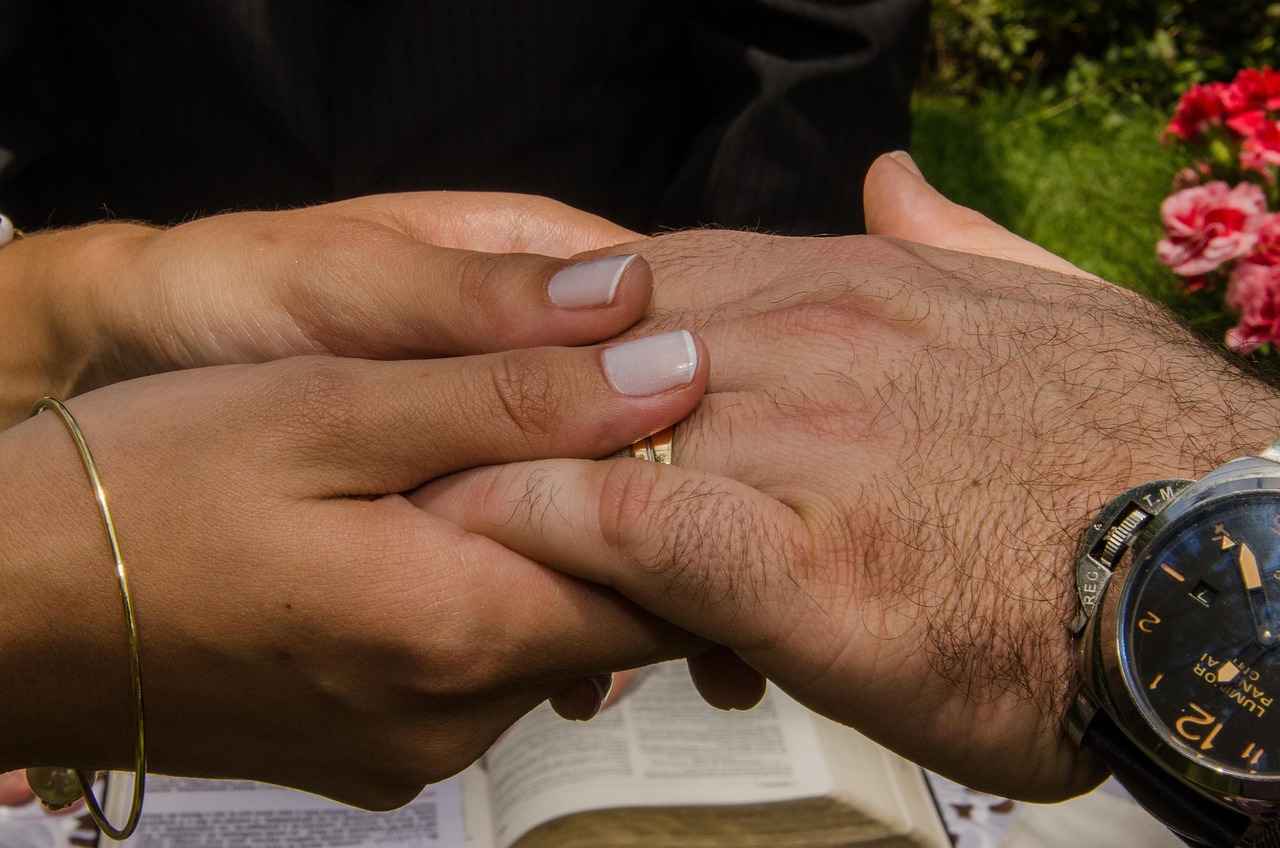
What Are the Psychological Benefits of Using Prayer Beads?
Prayer beads have been utilized across various cultures and religions for centuries as a means to facilitate meditation and prayer. Their significance extends beyond mere counting; they play a crucial role in enhancing mental well-being and promoting emotional stability. This article delves into the psychological benefits of using prayer beads, providing insights into how they can improve relaxation and reduce stress.
The act of using prayer beads is inherently repetitive, creating a soothing rhythm that can lead to a meditative state. This repetitive motion, whether through counting or reciting mantras, encourages a sense of calmness and tranquility. As practitioners focus on the beads, they often find their minds drifting away from daily stressors, allowing for a mental reset.
Yes, the use of prayer beads can significantly lower stress levels. Engaging in the tactile experience of moving beads through one’s fingers can serve as a grounding technique. This physical action draws attention away from anxiety-inducing thoughts and redirects it towards the present moment. According to various studies, such mindfulness practices can lead to lower levels of cortisol, the stress hormone.
The repetitive nature of bead counting fosters a state of mindfulness, which is essential for emotional regulation. Each bead can symbolize a specific intention or prayer, allowing users to channel their thoughts and feelings constructively. This practice not only helps in achieving a sense of focus but also promotes a deeper connection with one’s emotions, leading to improved emotional resilience.
Prayer beads act as a physical reminder to stay present. By concentrating on the beads, users can cultivate a state of mindfulness, which is crucial for mental clarity. This focus can enhance one’s ability to process thoughts and emotions, leading to a more profound understanding of oneself and one’s surroundings.
Many individuals report that using prayer beads provides a sense of comfort during times of anxiety. The act of counting beads can serve as a calming ritual, allowing users to anchor themselves amidst chaotic thoughts. This practice can create a safe space for reflection, helping individuals navigate their feelings with greater ease.
- Enhanced Emotional Awareness: Regular use of prayer beads can lead to a heightened awareness of one’s emotional states, fostering personal growth.
- Improved Focus: Consistent practice can enhance concentration and attention span, benefiting various aspects of life.
- Increased Resilience: Engaging with prayer beads can build emotional resilience, equipping individuals to handle life’s challenges more effectively.
To reap the psychological benefits of prayer beads, consider integrating them into your daily routine:
- Set Aside Time: Dedicate a few minutes each day for bead practice, whether for meditation or prayer.
- Focus on Breathing: Combine bead counting with deep breathing exercises to enhance relaxation.
- Reflect on Intentions: Use each bead to represent a specific intention or prayer, fostering a deeper spiritual connection.
In conclusion, the psychological benefits of using prayer beads are profound and multifaceted. By promoting relaxation, reducing stress, and encouraging mindfulness, prayer beads serve as valuable tools for enhancing mental well-being. Whether used in a religious context or as a personal practice, they hold the potential to transform one’s emotional landscape.
Mindfulness and Focus
Mindfulness and focus are essential components of spiritual practices across various faiths, and prayer beads serve as invaluable tools in cultivating these qualities. By engaging with prayer beads, practitioners can enhance their ability to remain present, fostering a deeper connection to their spiritual beliefs.
Prayer beads, regardless of their cultural origin, are designed to assist users in maintaining concentration during their spiritual exercises. The tactile experience of handling the beads provides a physical anchor that can help redirect wandering thoughts back to the present moment. This act of counting beads can transform into a meditative practice, allowing individuals to immerse themselves fully in their prayer or mantra.
The repetitive motion of moving from one bead to the next can induce a state of calmness and clarity. This process not only reduces mental clutter but also encourages a sense of peace. As users engage with their beads, they often find that their worries and stressors diminish, allowing for a more profound spiritual experience.
Many practitioners report that using prayer beads helps them achieve a state of heightened awareness, which can facilitate deeper insights into their faith. The focus required to count each bead allows for introspection and contemplation, leading to a greater understanding of one’s beliefs and values. This spiritual clarity can be transformative, offering new perspectives and encouraging personal growth.
- Christianity: The rosary encourages a structured approach to prayer, guiding users through specific prayers while fostering mindfulness.
- Islam: The misbaha aids in the remembrance of God, allowing practitioners to maintain focus on their spiritual intentions.
- Buddhism: Mala beads facilitate mantra recitation, creating a rhythmic flow that enhances meditation and mindfulness.
- Hinduism: Japa malas assist in the repetition of mantras, promoting a deep sense of connection to the divine.
Engaging with prayer beads can be particularly beneficial for those experiencing anxiety. The act of counting beads serves as a grounding technique, helping individuals focus on the present rather than overwhelming thoughts. This simple yet effective practice can provide comfort during stressful times, allowing users to find solace in their spiritual routines.
The materials used to create prayer beads can also enhance their significance. For example, beads made from tulsi wood in Hinduism are believed to carry spiritual properties that promote peace and tranquility. Similarly, rudraksha seeds are thought to provide calming effects, making them ideal for meditation practices.
Incorporating prayer beads into daily routines can significantly enhance mindfulness and focus. Practitioners can carry their beads with them, using them during moments of stress or when they need to reconnect with their spiritual practices. Setting aside specific times for prayer or meditation with the beads can create a structured approach to spirituality, fostering a deeper sense of connection.
In conclusion, prayer beads serve as powerful tools for enhancing mindfulness and focus across various spiritual traditions. By engaging with these beads, practitioners can cultivate a deeper connection to their faith, experience reduced anxiety, and gain valuable insights into their spiritual journeys.
Reducing Anxiety Through Prayer
In today’s fast-paced world, many individuals experience heightened levels of anxiety and stress. As a result, people are increasingly seeking effective methods to find solace and tranquility. One such method is the use of prayer beads, which have been employed across various cultures and religions for centuries. Engaging with prayer beads can not only serve spiritual purposes but also play a significant role in reducing anxiety and promoting emotional well-being.
The simple act of counting beads can transform into a grounding technique during moments of stress or uncertainty. This repetitive motion allows individuals to focus their thoughts and redirect their energy, creating a sense of calm. As practitioners move through the beads, they often experience a meditative state that fosters relaxation and mindfulness.
- Mindfulness Practice: The tactile experience of handling prayer beads encourages users to remain present in the moment. This mindfulness practice helps to alleviate racing thoughts that often accompany anxiety.
- Structured Routine: Establishing a routine with prayer beads can provide a sense of control and stability in an unpredictable world. The structured nature of counting beads can be comforting, offering a reliable anchor during turbulent times.
- Emotional Release: Many individuals find that engaging with prayer beads allows for an emotional release. Whether through prayer, mantra recitation, or simple reflection, this practice can help individuals process their feelings and reduce tension.
For many, prayer beads are more than just physical objects; they are a bridge to a deeper spiritual connection. This connection can foster a profound sense of inner peace, which is essential for managing anxiety. When individuals engage in practices that involve prayer beads, they often report feeling a heightened sense of purpose and belonging.
While traditionally used in religious contexts, the benefits of prayer beads can extend beyond spirituality. Here are some alternative ways to incorporate prayer beads into daily life for anxiety management:
- Daily Affirmations: Use prayer beads to recite positive affirmations. Each bead can represent an affirmation, allowing you to focus on uplifting thoughts and counteract negative self-talk.
- Breathing Exercises: Combine the counting of beads with deep breathing exercises. Inhale deeply as you move through one bead, and exhale as you transition to the next, creating a rhythmic pattern that promotes relaxation.
- Journaling Reflections: After using prayer beads, take a moment to journal your thoughts and feelings. This can help solidify the calming effects of the practice and provide insights into your emotional state.
Incorporating prayer beads into your routine can be a transformative practice for managing anxiety. The physical act of counting beads serves not only as a grounding technique but also as a way to cultivate mindfulness and emotional stability. Whether through spiritual or secular practices, prayer beads offer a unique tool for finding peace in a chaotic world.
Frequently Asked Questions
- What are prayer beads used for?
Prayer beads are primarily used as tools for meditation and prayer across various religions. They help practitioners focus their thoughts, count recitations, and deepen their spiritual experience.
- How many beads are typically found in a mala used in Buddhism?
A typical mala in Buddhism consists of 108 beads. This number is significant, representing the universe’s wholeness and aiding practitioners in their journey towards enlightenment.
- Are there different types of prayer beads in different religions?
Absolutely! Each religion has its own unique set of prayer beads. For instance, Catholics use the rosary, while Muslims use misbaha, and Hindus use japa mala. Each type serves specific spiritual purposes and reflects cultural traditions.
- Can using prayer beads help with anxiety and stress?
Yes! Engaging with prayer beads can promote relaxation and mindfulness, acting as a grounding technique. The repetitive motion of counting beads can create a calming effect, helping to alleviate anxiety during stressful times.
- What materials are commonly used to make prayer beads?
Prayer beads can be made from various materials, each chosen for its spiritual significance. Common materials include wood, gemstones, and seeds, such as tulsi and rudraksha, which are believed to carry unique properties that enhance spiritual practices.

